 W
WAll Saints' Church is a Church of England church located in Huntingdon, Cambridgeshire, England. There have been multiple churches on the site of this one. The earliest mention of a church dates to 973 AD with the original dedication having been to either St Mary, or The Blessed Virgin and All Martyrs.
 W
WAmesbury is a town and civil parish in Wiltshire, England. It is most famous for the prehistoric monument of Stonehenge which is in its parish, and for the discovery of the Amesbury Archer—dubbed the King of Stonehenge in the press—in 2002. It has been confirmed by archaeologists that it is the oldest continuously occupied settlement in Great Britain, having been first settled around 8820 BC.
 W
WAll Saints' Church, Bakewell, is the parish church of Bakewell, Derbyshire. It is a Grade I listed building.
 W
WThe Bingley Arms is a public house in Bardsey, Leeds, England. It claims to be both the oldest surviving business and oldest surviving pub in the United Kingdom. It is possibly the fourth oldest surviving business in Europe.
 W
WBishopwearmouth is an area in Sunderland, North East England.
 W
WThe Worshipful Company of Butchers is one of the Livery Companies of the City of London, England. Records indicate that an organisation of Butchers existed as early as 975; the Butchers' Guild, the direct predecessor of the present Company, was granted the right to regulate the trade in 1331. The Butchers' Guild was incorporated by Royal Charter centuries later, in 1605. The Butchers' still, unlike other Livery Companies, continues to exist as a trade association for members of the industry, instead of evolving into an institution primarily dedicated to charity. However, the Company does contribute, like all Livery Companies, to various charities.
 W
WCerne Abbey was a Benedictine monastery founded in 987 in the town now called Cerne Abbas, Dorset, by Æthelmær the Stout.
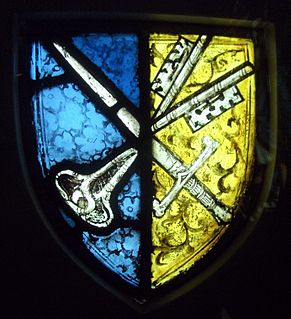 W
WChertsey Abbey, dedicated to St Peter, was a Benedictine monastery located at Chertsey in the English county of Surrey.
 W
WSt Peter's Church is a parish church in the Church of England. It is located in St Albans, England, to the north of the town centre.
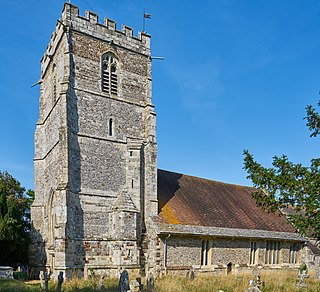 W
WCranborne Priory was a priory in Cranborne in Dorset, England. The priory church survives as Cranborne's parish church, the Church of St Mary and St Bartholomew, and is a Grade I listed building, with parts of the building dating back to the 12th century.
 W
WThe Kingdom of England was a sovereign state on the island of Great Britain from 927, when it emerged from various Anglo-Saxon kingdoms until 1707, when it united with Scotland to form the Kingdom of Great Britain.
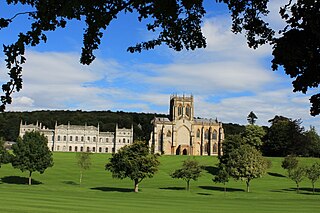 W
WMilton Abbey school is an independent school for day and boarding pupils in the village of Milton Abbas, near Blandford Forum in Dorset, in South West England. It has 224 pupils as of September 2019, in five houses: Athelstan, Damer, Hambro, Hodgkinson and Tregonwell. The school was founded in 1954 and is co-educational.
 W
WThe New Minster in Winchester was a royal Benedictine abbey founded in 901 in Winchester in the English county of Hampshire.
 W
WThe Pilgrims' School is a boys' preparatory school and cathedral school in the cathedral city of Winchester, Hampshire, England. The official date of establishment is unknown but historical records indicate that choristers of Winchester Cathedral's renowned choir have been educated in the Close as early as the 7th century. As it also educates choristers of the Winchester College Chapel Choir, the school maintains close links with the college. It is not to be confused with the Pilgrim School, Bedford, built in 1962.
 W
WRamsey Abbey was a Benedictine abbey in Ramsey, Huntingdonshire, England. It was founded about AD 969 and dissolved on 22 November 1539.
 W
WRomsey Abbey is the name currently given to a parish church of the Church of England in Romsey, a market town in Hampshire, England. Until the Dissolution of the Monasteries it was the church of a Benedictine nunnery. The surviving Norman-era church is the town's outstanding feature and is now the largest parish church in the county of Hampshire since changes in county boundaries led to the larger Christchurch Priory being now included in Dorset. The current vicar is the Reverend Thomas Wharton, who took up the post in September 2018.
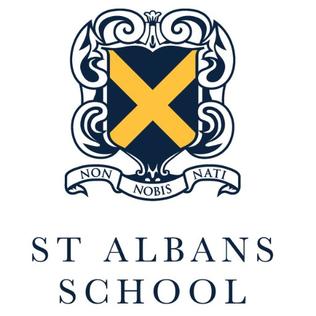 W
WSt Albans School is an independent school in the city of St Albans in Hertfordshire, in the South East of England. Pre-sixth form admission is restricted to boys, but the sixth form has been co-educational since 1991. Founded in 948 by Wulsin, St Albans School is the oldest school in Hertfordshire and one of the oldest schools in the world. The school has been called "Britain's oldest public school" by the Daily Mail. Nicholas Carlisle, in 1818, described the school as "of very ancient origin, and of great celebrity" and the Good Schools Guide describes St Albans as a "traditional public school, with a rich history".
 W
WSt Michael's Church, St Albans is a Church of England parish church in St Albans, Hertfordshire, England. Much of the building is late 10th or early 11th century, making it the most significant surviving Anglo-Saxon building in the county. It is located near the centre of Roman Verulamium to the west of the modern city.
 W
WSt Stephen's Church is a parish church in the Church of England in St Albans, Hertfordshire, England. It is located to the south of the town centre, at the start of St. Stephen's hill up to the Abbey. It is a Grade II* listed building.
 W
WScarborough is a town on the North Sea coast of North Yorkshire, England. Historically part of the North Riding of Yorkshire, the town lies between 10–230 feet above sea level, from the harbour rising steeply north and west towards limestone cliffs. The older part of the town lies around the harbour and is protected by a rocky headland.
 W
WSherborne Abbey, otherwise the Abbey Church of St Mary the Virgin, is a Church of England church in Sherborne in the English county of Dorset. It has been a Saxon cathedral (705–1075), a Benedictine abbey church (998–1539), and since 1539, a parish church.
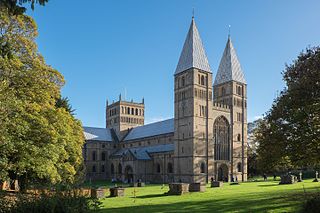 W
WSouthwell Minster is a minster and cathedral, in Southwell, Nottinghamshire, England. It is situated six miles from Newark-on-Trent and thirteen miles from Mansfield. It is the seat of the Bishop of Southwell and Nottingham and the Diocese of Southwell and Nottingham.
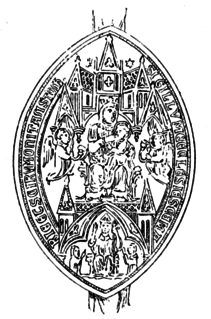 W
WTavistock Abbey, also known as the Abbey of Saint Mary and Saint Rumon, is a ruined Benedictine abbey in Tavistock, Devon. Nothing remains of the abbey except the refectory, two gateways and a porch. The abbey church, dedicated to Our Lady and St Rumon, was destroyed by Danish raiders in 997 and rebuilt under Lyfing, the second abbot. The church was further rebuilt in 1285 and the greater part of the abbey between 1457 and 1458.
 W
WThorney Abbey, now the Church of St Mary and St Botolph, was a medieval monastic house established on the island of Thorney in The Fens of Cambridgeshire, England.
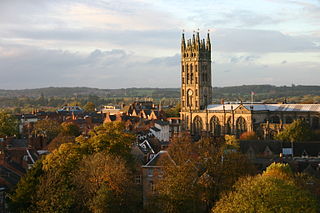 W
WWarwick is a market town and county town of Warwickshire, England. It lies near the River Avon, 11 miles south of Coventry and west of Leamington Spa and Whitnash. Its population was 31,345 in 2011. Signs of Neolithic activity precede unbroken habitation to the 6th century AD. It was a Saxon burh in the 9th century; Warwick Castle was built during the Norman conquest of England. Warwick School claims to be the country's oldest boys' school. The earldom of Warwick, created in 1088, controlled the town and built its walls, of which Eastgate and Westgate survive. The castle became a fortress, then a mansion. The Great Fire of Warwick in 1694 destroyed much of the town. Warwick missed industrialisation, but the population has grown almost sixfold since 1801.
 W
WWarwick School is an independent school for boys, with boarding facilities, in Warwick, England.
 W
WWinchester Cathedral Priory was a cathedral monastery attached to Winchester Cathedral, providing the clergy for the church. Cenwealh son of Cynegils is credited with constructing the Old Minster of Winchester in the 640s, and a new bishopric was created in the 660s with Wine as the first bishop. Although attacked by the Vikings in 860 and 879, the monastery survived and recovered.
 W
WWolverhampton is a city, metropolitan borough, and administrative centre in the West Midlands, England. At the 2011 census, it had a population of 249,470. Natives of the city are called "Wulfrunians".
 W
WSt Peter's Collegiate Church is located on the northern side of central Wolverhampton, England. For many centuries it was a chapel royal, and from 1480 a royal peculiar, independent of the Diocese of Lichfield and even the Province of Canterbury. The collegiate church was central to the development of the town of Wolverhampton, much of which belonged to its dean. Until the 18th century, it was the only church in Wolverhampton and the control of the college extended far into the surrounding area, with dependent chapels in several towns and villages of southern Staffordshire.